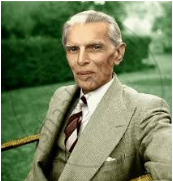Advertisements
Advertisements
प्रश्न
Answer the following question briefly:
With reference to the Indian national movement, answer the following: Examine the role of Subhash Chandra Bose in the Indian freedom struggle.
उत्तर
Subhash Chandra Bose believed that the only way India could get her freedom was to drive the British out of India by the use of armed force. Subhash Chandra Bose had resigned from the Congress in 1939 and formed a new party called the Forward Bloc. He decided to go abroad to join hands with the enemies of the British and drive the British out of India. He was put under house arrest in Calcutta, but he managed to escape in 1941. He first went to Russia and then to Germany and finally to Japan. In Tokyo, he took over the leadership of the Indian Independence Movement in East Asia from Rash Behari Bose. Captain Mohan Singh (a former captain in the British Indian army) had organized the Azad Hind Fauz of the Indian National Army (INA).
Subhash Chandra Bose became the supreme commander of the INA. In 1944 at a meeting in he took an oath to liberate India. ‘Give me blood and I will give you freedom,’ he declared. Netaji infused a new life and spirit into the INA. He fired the imagination of his soldiers with passionate, inspiring speeches, They were ready to lay down their lives for the liberation of their motherland. With the battle cry of ‘Dilli Chalo,’ the INA advanced into India along with the Japanese army.
APPEARS IN
संबंधित प्रश्न
Fill in the blank:
The English language acted as a ___________ language among the educated Indians.
Fill in the blanks:
The assertive nationalists believed that British rule in India was not a _________ but a ______.
This is the picture of a national leader

Identify the person in the picture.
Fill in the blank:
The menacing presence of the Japanese army on the eastern borders of India posed a serious threat to___________.
Answer the following question briefly:
With reference to Indian independence, answer the following question: What is the significance of 26 January 1950?
Match the contents of Column A and Column B:
| Column A | Column B |
| 1. Lord Mountbatten | a. Jawaharlal Nehru |
| 2. 'Do or Die' | b. Subhash Chandra Bose |
| 3. Revolt of Royal Indian Navy | c. Mahatma Gandhi |
| 4. Subhash Chandra Bose resigned from Congress presidentship | d. Viceroy |
| 5. Quit India Movement | e. 1942 |
| 6. Azad Hind Fauj | f. 1939 |
| 7. Interim government | g. 1946 |
State whether the following statement is True or False:
The Congress swept the polls in 8 provinces in the 1937 elections.
Answer the following question:
Discuss the main aspects of the Non-Cooperation Movement.
Answer the following question:
Discuss the main features of the Government of India Act, 1935.
Match the contents of Column A with those of Column B:
| Column A | Column B |
| 1. Annie Besant | (a) Khilafat Movement |
| 2. Morley-Minto Reforms | (b) Home Rule League |
| 3. Muslim League | (c) 1909 |
| 4. Surat Split | (d) Nawab Salimullah Khan |
| 5. Ali brothers | (e) 1907 |
